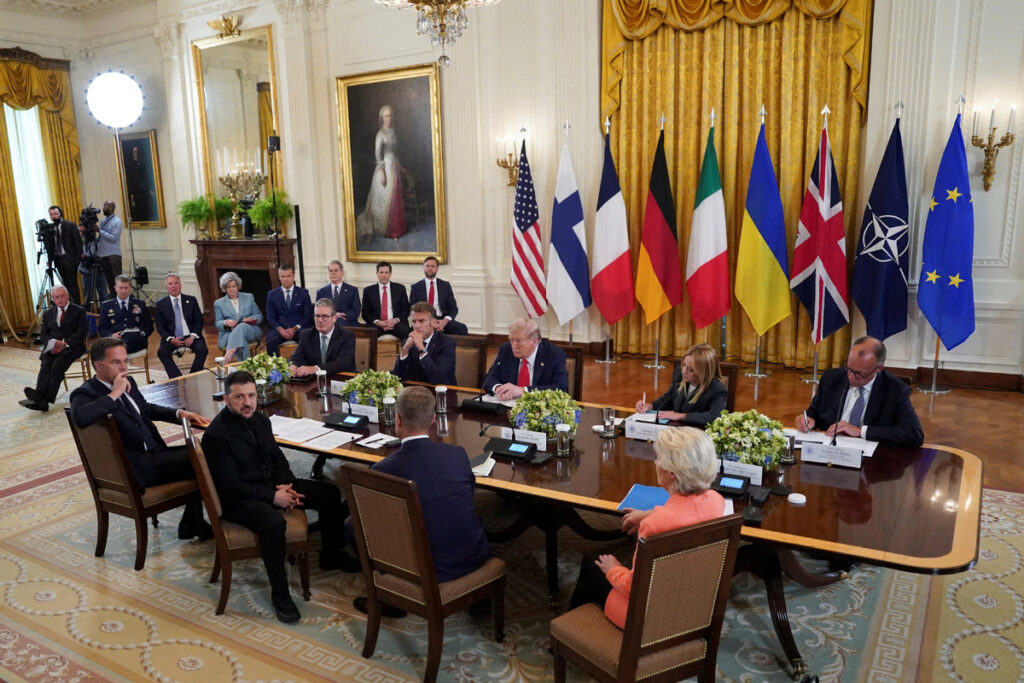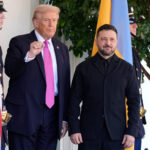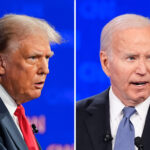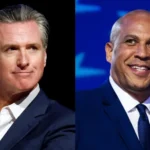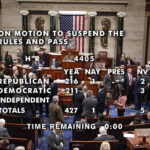Despite Flurry Talks on Russia War in Ukraine, Obstacles to Peace Stay/ Newslooks/ WASHINGTON/ J. Mansour/ Morning Edition/ Despite high-level global meetings, including a second Trump-Zelenskyy summit, little tangible progress was made toward peace in Ukraine. Security guarantees, ceasefire conditions, and territory disputes remain unresolved, largely benefiting Russia’s slow advance. European leaders express hope, but Putin holds the leverage.
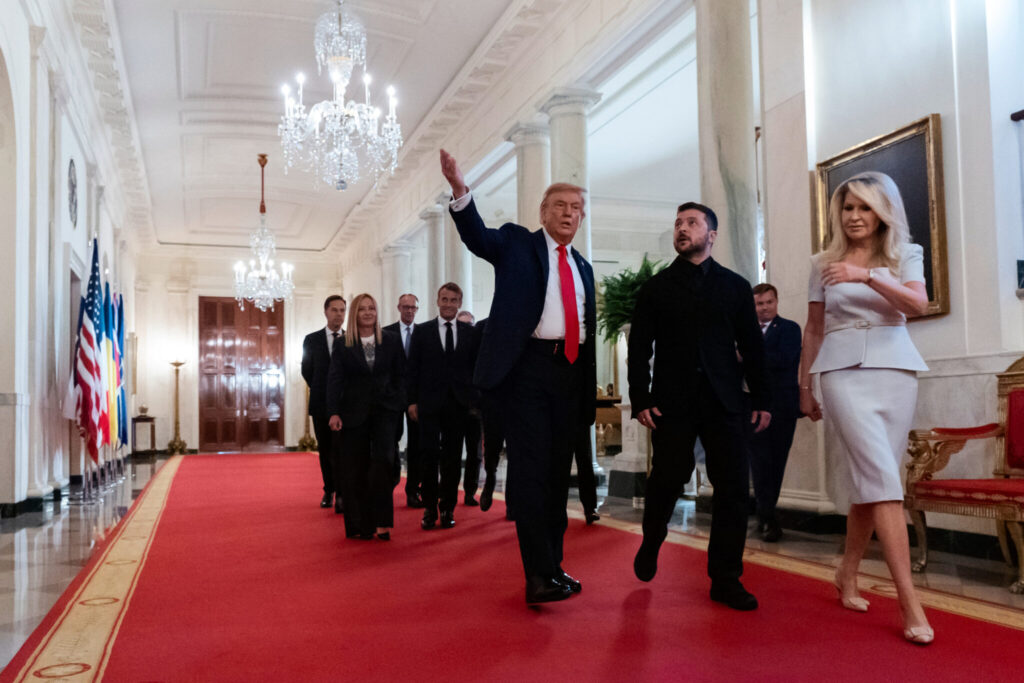
Ukraine Peace Talks Quick Looks
- Second Oval Office meeting between Trump and Zelenskyy showed improved diplomatic tone.
- European leaders joined in a display of transatlantic unity, expressing gratitude to Trump.
- No agreement reached on ceasefire, territorial concessions, or security guarantees.
- Putin’s position remains firm, rejecting NATO forces and ceasefire deals.
- Trump shifted positions, calling ceasefire “unnecessary” before later supporting it.
- Ukraine seeks military backing and security guarantees from NATO-aligned nations.
- European-led coalition of 30 countries proposes peacekeeping structure — U.S. role unclear.
- Zelenskyy offers to meet Putin, but Moscow hasn’t agreed.
- Russia holds one-fifth of Ukrainian territory, including Crimea and parts of Donbas.
- Negotiations may benefit Putin as ground advances continue slowly in Ukraine.
- Analysts suggest Europe builds pressure by forcing Putin to be the one to say no.
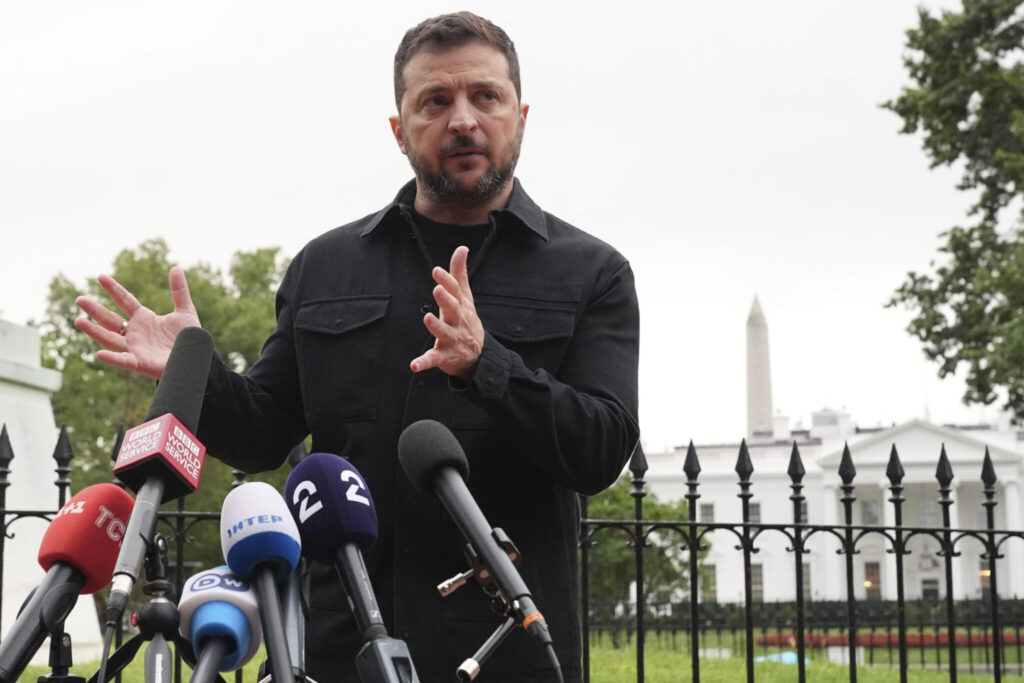
Deep Look: Peace in Ukraine Elusive as Global Talks Yield Few Breakthroughs
WASHINGTON — Despite a renewed diplomatic push involving the U.S., European leaders, and Ukrainian President Volodymyr Zelenskyy, hopes for ending Russia’s war in Ukraine remain largely aspirational. While a second Oval Office meeting between U.S. President Donald Trump and Zelenskyy went smoothly, concrete progress was limited on all major issues — to the likely advantage of Russian President Vladimir Putin.
In contrast to their rocky February meeting, Trump and Zelenskyy shared warm public exchanges on Monday. European leaders joined them in Washington in a powerful show of unity. German Chancellor Friedrich Merz expressed cautious optimism, saying his expectations “were exceeded.”
Still, despite the positive tone, the leaders failed to resolve key issues preventing a ceasefire and lasting peace.
Security Guarantees for Ukraine Still Unsettled
Zelenskyy insists that any peace deal with Russia must be accompanied by robust security guarantees to prevent future aggression. That includes long-term military support and training for Ukraine’s armed forces from NATO countries.
Kyiv has also sought NATO-like protections — a collective defense agreement — though specifics remain unclear. European allies are working to create a multinational force to enforce any eventual peace agreement. So far, 30 countries, including Japan and Australia, have signed on.
The U.S. role remains vague. Trump said the U.S. would assist with “coordination” but did not commit American troops. European leaders, wary of further Russian expansionism, are eager to secure U.S. military involvement.
Russia flatly rejects any NATO presence in Ukraine, further complicating matters. British Prime Minister Keir Starmer and French President Emmanuel Macron co-hosted a virtual meeting Tuesday to discuss peacekeeping strategies. NATO Secretary-General Mark Rutte said another session — this time including Trump — will follow soon.
Ceasefire Debate Reveals Deep Divides
Ukraine and its allies continue to push for a ceasefire to halt hostilities during negotiations. However, Putin, whose forces continue to advance incrementally, has shown little interest.
Ahead of his recent call with Putin, Trump threatened “severe consequences” if Russia refused a ceasefire. But after the conversation, he pivoted, echoing Putin’s preference for a “comprehensive peace deal” instead of a temporary ceasefire.
In Monday’s meeting with Zelenskyy, Trump said a ceasefire was “unnecessary.” Hours later, following discussions with European leaders, he revised his stance, saying all parties “prefer an immediate ceasefire” to allow time for peace talks.
Trump’s shifting views are significant, as they could influence how much Ukrainian territory Russia holds by the time serious negotiations begin.
Occupied Ukrainian Territory: The Sticking Point
Perhaps the most difficult hurdle is territorial control. Putin reportedly wants Ukraine to cede Donbas — a region where fierce battles continue — along with Crimea and six other partially occupied provinces. In total, Russia controls about 20% of Ukrainian territory.
Zelenskyy strongly opposes this. Ukraine’s constitution forbids the breakup of its territory, and any concessions could encourage further invasions, he warns.
During Monday’s meetings, Rutte said the topic of ceding territory was not discussed. That, he added, is a matter for Zelenskyy and Putin to decide in one-on-one negotiations.
Zelenskyy Still Open to Meeting Putin
Zelenskyy remains open to direct talks with Putin. Earlier this year, he even challenged the Russian leader to meet in Turkey, a proposal that was rebuffed. Putin has said a personal meeting would only happen if meaningful progress is made first.
On Monday, Trump stated on social media that he had contacted Putin and started arranging a meeting between him and Zelenskyy at an undetermined location. Trump said he would join afterward.
However, Putin’s adviser Yuri Ushakov gave no indication that Moscow has agreed to either a bilateral or trilateral meeting involving Ukraine. Analysts suggest Putin may delay any agreement to maintain strategic leverage.
According to Janis Kluge of the German Institute for International and Security Affairs, European leaders are deliberately raising expectations.
“Europeans hype up expectations to create a reality in which Putin disappoints,” he wrote on X (formerly Twitter), describing it as a tactic to force Putin into an unfavorable spotlight.

